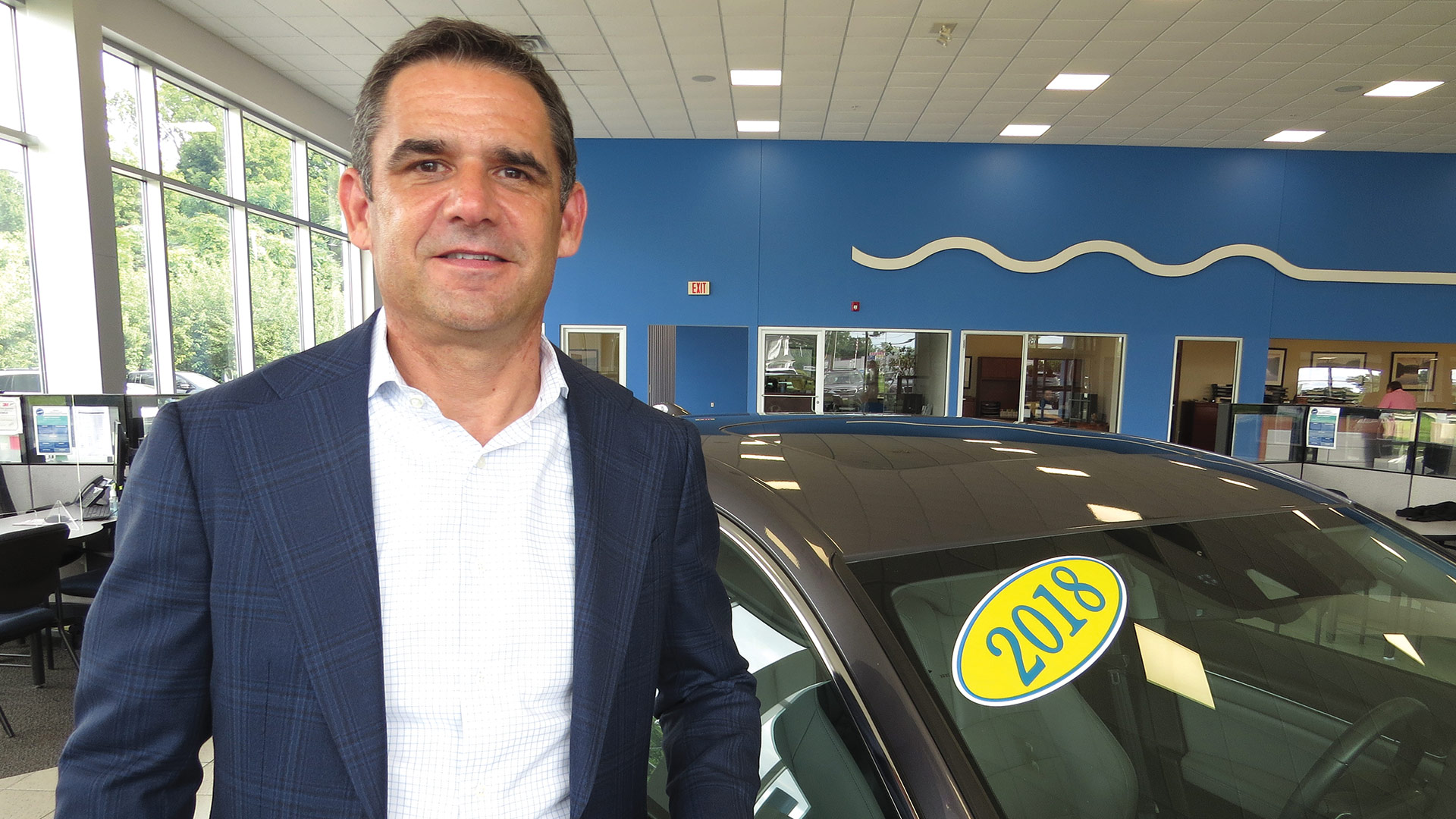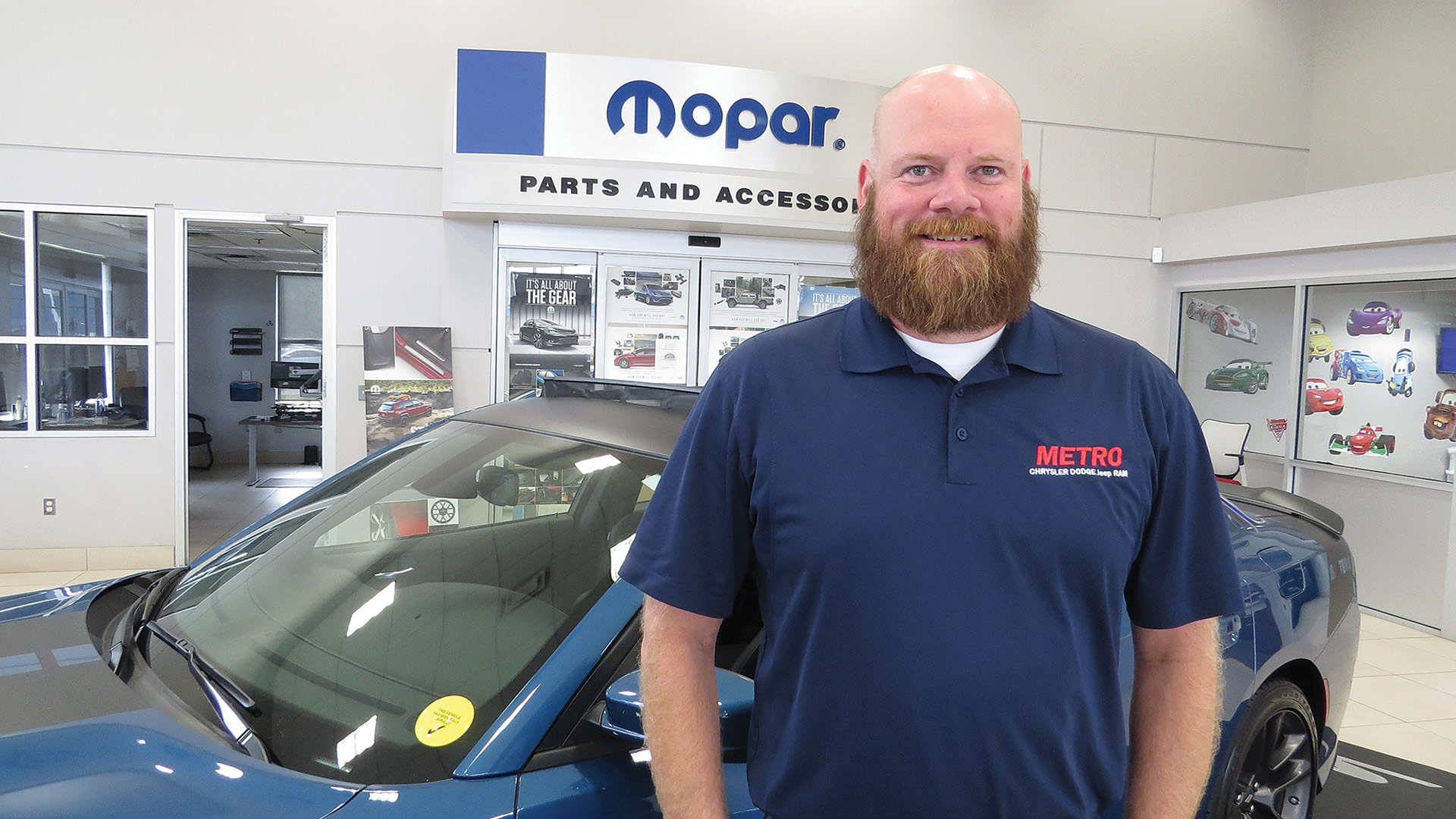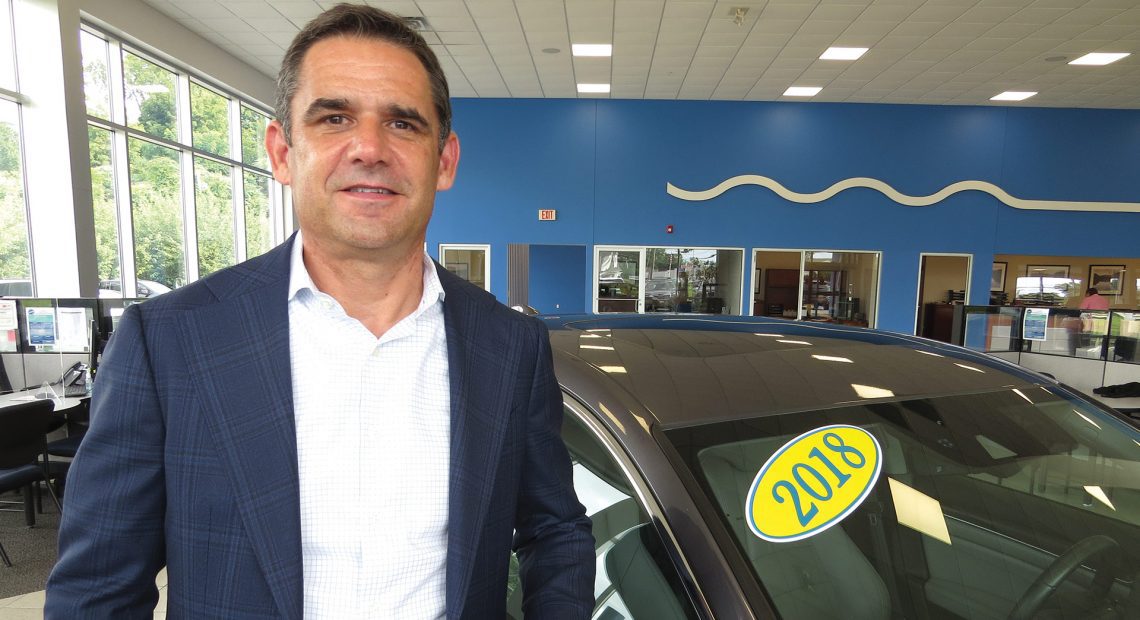A Different World

Ben Sullivan says an ongoing inventory crisis has forced dealers to place late-model vehicles under the showroom lights.
Auto dealers are used to adjusting to changing economic conditions and fluctuations with the laws of supply and demand. But in recent months, they’ve had to contend with an almost unprecedented mix of challenges — from dwindling inventory to an historic shortage of used cars. There is no real consensus on just when ‘normal’ will return, but all indications are that it won’t arrive until at least the first quarter of 2022.
As they talked about the past 18 months and what they project for the next few quarters, area auto dealers sounded similar tones and eventually came back to the same word. They are all adjusting.
To be more specific, they’re adjusting to some conditions they’ve rarely, if ever, seen before, and all at once. Things like:
• Used cars populating the showrooms. Yes, there have at times been some higher-end used models or a 1930 Model A in the showroom for effect, but now, area dealerships are showcasing cars with ‘2019’ and ‘2018’ stickers on the windshield, out of necessity — because that’s all they have.
• Lots that are half, or more than half, empty. Inventories of new cars are at levels never seen before as factories, confronting an ongoing microchip shortage, struggle, unsuccessfully, to keep up with what has been steady or even better-than-steady demand because many consumers still have money to spend, and it’s burning a hole in their collective pockets. Meanwhile, used cars are also in short supply. Most dealers report total inventory (new and used cars) to be one-quarter to one-third of what would be considered normal, with many being able to count new-car inventory using just two hands — with a few fingers left.
• Factory ordering becoming the new way of doing business.
• A complicated used-car market that is finally starting to level off in some respects. Still, cars are hard to find, dealers are going to great lengths to find them, and they must be careful not to pay too much and risk watching the market change quickly and profoundly.
• Even some workforce issues. Indeed, dealerships are not immune to the challenges facing businesses in seemingly every sector when it comes to hiring and retaining workers.
Add it all up, and it’s been a year described, alternately and by different people, as ‘interesting,’ ‘challenging,’ and ‘frustrating.’
“We went from trying to jump-start the auto industry after COVID happened — we had these great incentives and offers for customers who maybe weren’t in the market to incentivize them to buy a car — to now not even having the inventory levels to support that. It’s been a wild ride.”
“It’s an interesting world out there, that’s for sure,” said Ben Sullivan, chief operating officer for Balise Motor Sales, noting that, over the past 18 months, dealers have had all sorts of challenges thrown at them, from the sudden standstill after COVID-19 hit to the current situation where they simply don’t have enough cars to sell.
Carla Cosenzi, president of the TommyCar Auto Group, which includes Northampton Volkswagen, Country Nissan, Country Huyndai, Volvo Cars Pioneer Valley, and Genesis of Northampton, agreed.
“We went from trying to jump-start the auto industry after COVID happened — we had these great incentives and offers for customers who maybe weren’t in the market to incentivize them to buy a car — to now not even having the inventory levels to support that,” she said. “It’s been a wild ride.”
Moving forward, the $64,000 questions concern how long this period of extreme adjustment will continue, and what things will look like when it does.
There is no real consensus on the answers, but most believe it will be well into 2022, and perhaps a year or more from now, before the dust fully settles and the lots at area dealerships start to look like they did back in early 2020, when the challenges were much different and there were … too many cars.

Mike Kuzdzal says his lot in Chicopee has historically boasted more than 400 total vehicles, new and used. Now, there are often fewer than 100 of each.
“I think we’re at the bottom of the curve when it comes to availability,” said Sullivan. “From now through the fourth quarter, it will start to improve, but it won’t be back up to what we would call normal historical levels until June of next year.”
Cosenzi agreed. “They’re saying that October is when we’re going to see the inventory slowly start to trickle back in,” she said, noting that ‘they’ means the manufacturers. “We’re not going to get back to the same levels by then, and the expectation is that, by mid-2022, we’ll be back to something approaching normal.”
Mike Kuzdzal, general manager of Metro Chrysler Dodge Jeep Ram in Chicopee, concurred.
“The manufacturers are optimistic month over month that they’ll hopefully be able to ramp up production, but they just can’t keep up with current demand,” he noted. “As they make these cars and put them in an in-transit mode to us, we’re selling them before they even hit the ground.
“My hope is that, by the end of quarter one next year or the beginning of quarter two, we can get back to what we used to be,” he went on. “But the manufacturers are going to have to go double or triple time to get us there.”
A Different Gear
Kuzdzal told BusinessWest his dealership is one of many in the area that have placed signs on the property saying ‘we buy used cars’ — or words to that effect.
And, by and large, these signs are working, he said, noting that, just before he spoke with us, he bought a car off the street.
Such transactions, once quite rare, have become somewhat commonplace, said Kuzdzal and others we spoke with, noting, first, that COVID has yielded conditions whereby many families can do with at least one fewer car in the driveway, and, second, that prices for such vehicles have never been higher — and no one knows how long they’ll stay this high.
“Because of the pandemic and people working from home, a second or third car is not required,” Kuzdzal explained. “They’re sharing one car and saying, ‘I’m going sell my car at an all-time high and save that monthly payment, the excise tax, and insurance — and if I do go back to work, I’ll get back in the market.’”
Transactions like one he described are more than welcome, because traditional sources of used cars — everything from new-car trade-ins to rental cars — have dried up in dramatic fashion. So dealers have had to get creative.
“We’ve been acquiring a lot of vehicles from our service customers and past customers,” said Cosenzi, adding that her dealerships are now also buying essentially any car that comes off lease, where before they would cherry-pick. “We came up with a really easy five-minute trade process that has helped us generate quite a bit of used vehicle inventory.”
Overall, those signs offering to buy used cars or print, TV, and radio ads stating that ‘no one will pay more for a used car than we will’ are just part of the changed landscape in auto sales.

Carla Cosenzi (with her kids, Nico and Talia) is among many dealers expecting a return to something approaching normal by next spring.
The dramatically lower volumes of inventory, used cars in the showroom, factory ordering, and essentially selling cars long before they reach the showroom, or even leave the factory, are other components of this altered state, one in which dealers say business is still solid in many respects, but altogether different.
Inventory is perhaps the biggest issue, and it has changed the landscape in all kinds of ways, the most noticeable being the lonesome lots at area car stores. The dealers aren’t used to it, and neither are local residents.
Indeed, Sullivan noted that more than a few people have asked if Balise has divested itself of the massive Chevrolet dealership on West Columbus Avenue. That Chevy store is quite visible from I-91, especially the ramp leading to the South End Bridge, which means people can see — or, in this case, not see — the rows of vans and trucks that have historically populated the south end of the property.
“Every single car that comes in is sold the day it lands there,” he said, adding that this phenomenon helps explain the bare pavement and put the inventory problem in perspective.
But not as well as some of the numbers offered by the dealers we spoke with.
“Where we normally run with 350 to 450 new cars and maybe 150 used cars, now we’re down to south of 100 of both, so we’re at a quarter of our running inventory,” Kuzdzal said.
Sullivan noted that the Balise family of dealerships includes more than a dozen makes, foreign and domestic, each one having inventory issues that have fluctuated over the past several months, with some doing better now than they were in the spring and others still struggling. He noted that, at the huge Honda store on Riverdale Street in West Springfield, there are normally 250 new cars on the lot. One day a few weeks ago, there were seven.
“It’s a situation we certainly haven’t seen, and each manufacturer will hit that low point at a different time. When Honda was out, Toyota had cars; when Toyota was out, Honda had cars. Each month, it kind of moves around, but at this point, heading into the fourth quarter, things will start to get back to what we call a more normal state.”
“It’s a situation we certainly haven’t seen, and each manufacturer will hit that low point at a different time,” he explained. “When Honda was out, Toyota had cars; when Toyota was out, Honda had cars. Each month, it kind of moves around, but at this point, heading into the fourth quarter, things will start to get back to what we call a more normal state.”
Cosenzi, who concurred with that assessment, noted that the TommyCar stable was helped initially by the fact that it traditionally keeps large volumes of inventory on its lots to offer consumers a wide selection.
“Our dealerships are usually crammed with cars,” she noted. “And that really helped us when this happened; we had a larger supply available to us when the chip shortage hit. Some dealers that only carry a one- or two-month supply ended up in trouble, while we carried a three and a half or four-month supply.”
Shifting Expectations
Given the shortages of microchips and other parts they’re facing, Sullivan said manufacturers, for the most part, are now only churning out the most popular, and sellable, variations of given models, and customers are adapting to this altered state.
“We’re used to carrying hundreds and hundreds of vehicles at every dealership, and customers are used to looking at 30,000 buildable combinations of a Honda Accord,” he explained. “They’ll say, ‘I want a blue one with a beige interior and this sunroof; I want this, but I don’t want that.’ The way the manufacturers have adapted through this is they’re only building the most commonly sold and fastest-churning vehicles that they have — they’re only doing certain trim levels.
“You’d think that customers would be mad,” he went on. “But they actually seem relieved. They’re saying, ‘OK, that’s the way they’re going to come in; I’ll take that one.’ Customers have been unbelievably accommodating, saying, ‘I really wanted a red one, but I guess a black one is OK.’”
Kuzdzal concurred, and noted that, in most ways, it’s easier to sell the few cars that the dealers do have on their lots.
“The consumer is coming in with his or her defenses down,” he explained. “They know it’s a tough time to get cars, and if we have it, they should buy it. If they don’t, we’ll sell it to the next person, so that makes the negotiations much easier.
“It’s never been like this,” he went on. “It’s a very comparable time to when we had the gas issue, when we spiked over $5 a gallon. But it has not slowed business down like it did then; it’s a different time, and we have to react to what’s coming our way. Inventory is at an all-time low, used cars are at an all-time high as far as value is concerned, and people are taking advantage of that.”
In addition to using that word ‘adjusting,’ all those we spoke with inevitably came back to that other word you hear and read so often these days — normal.
Some spoke of what is obviously a new normal, while others speculated on when and even if things would return to what used to be the norm.
But Sullivan spoke for everyone, and put things in their proper perspective, when he said, “I can’t wait to return to the old normal.”
Just when that will happen is anyone’s guess, but it seems certain that it can’t be a short drive from here.
George O’Brien can be reached at [email protected]





